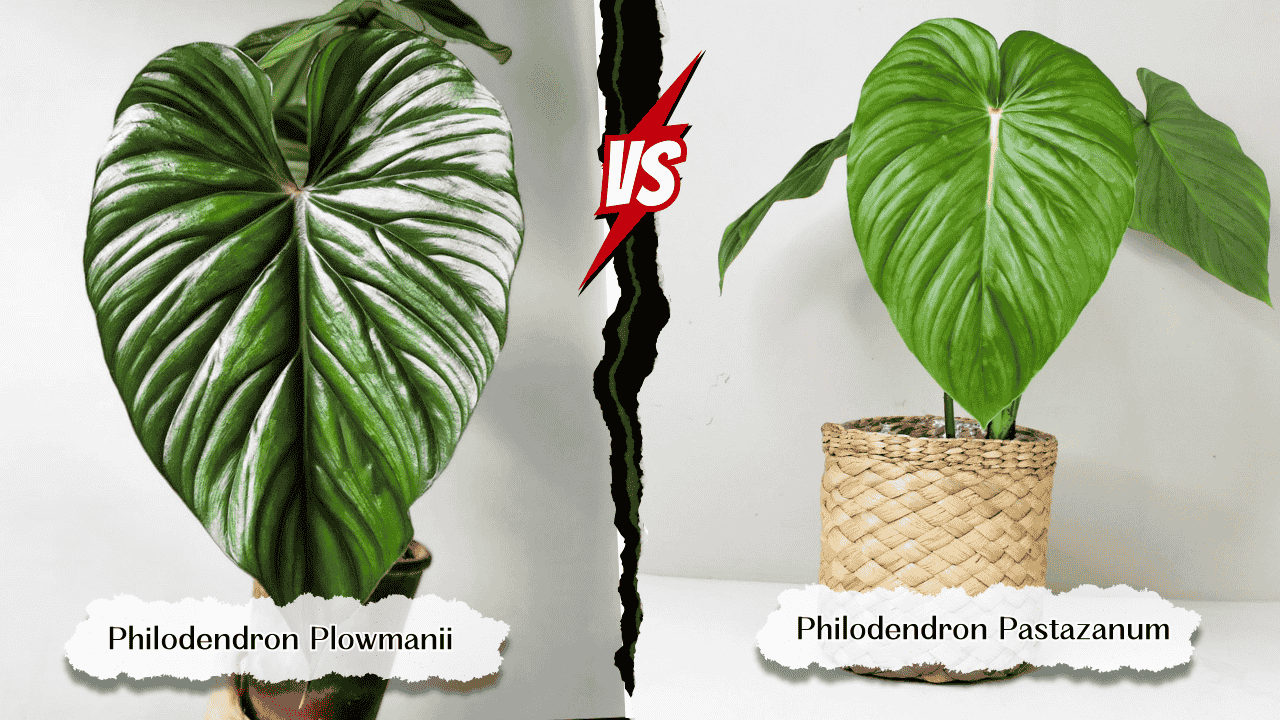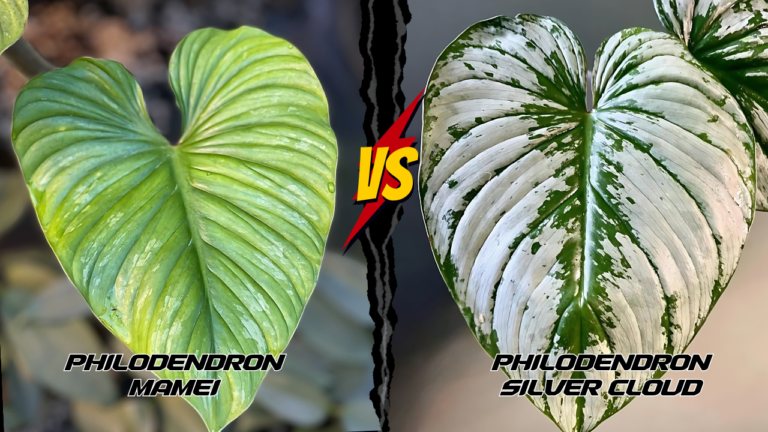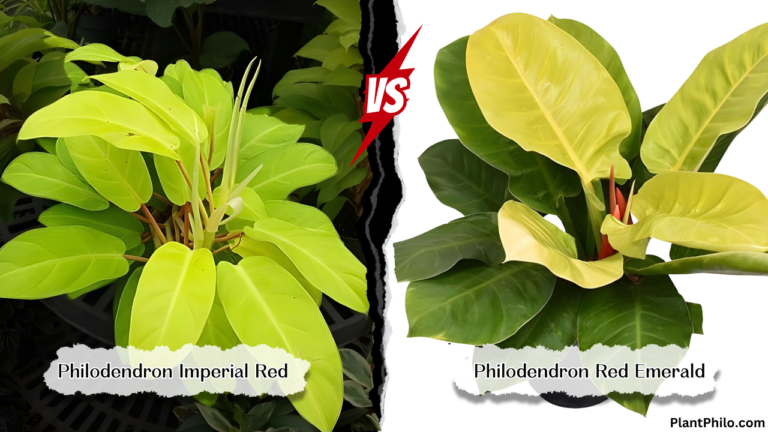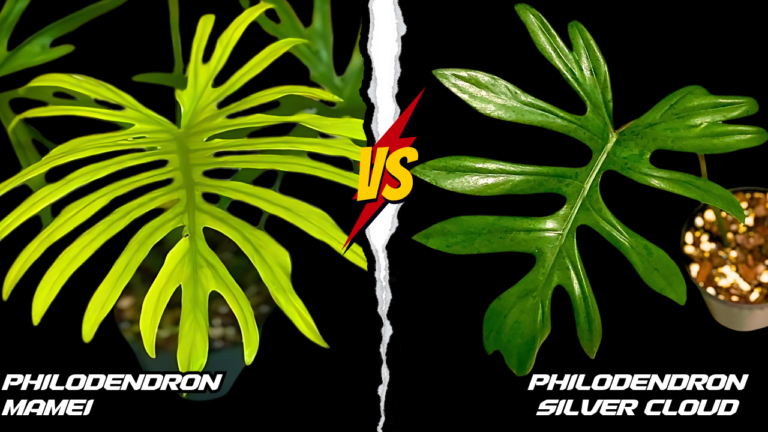Do You Know the Differences Between Philodendron Pastazanum and Plowmanii? (Part 2)
In Part 1, we detailed the core differences between Philodendron Pastazanum and Philodendron Plowmanii.
Now, in Part 2, we dive deeper into their unique aspects, including tissue-cultured varieties, pest and disease management, toxicity, and seasonal care. This comprehensive guide will enhance your understanding of these two popular philodendrons.
Comparison Table: Philodendron Pastazanum vs. Plowmanii
| Feature | Philodendron Pastazanum | Philodendron Plowmanii |
| Botanical Name | Philodendron pastazanum | Philodendron plowmanii |
| Common Names | Pastazanum Philodendron | Plowmanii Philodendron |
| Origin | Ecuador & Peru | Ecuador & Peru |
| Growth Habit | Creeping, terrestrial | Creeping, terrestrial |
| Leaf Shape & Size | Heart-shaped to elongated, up to 2-3 feet long | Heart-shaped, up to 1-2 feet long |
| Color | Velvety, deep green with prominent white to light green veins | Velvety, deep green with lighter green veins |
| Light Requirements | Bright, indirect light; tolerates low light but growth slows | Bright, indirect light; tolerates low light but growth slows |
| Watering Needs | Allow soil to dry out slightly between watering | Allow soil to dry out slightly between watering |
| Humidity | High humidity preferred (60-80%) | High humidity preferred (60-80%) |
| Fertilizing | Balanced liquid fertilizer diluted to half-strength, monthly during growing season | Balanced liquid fertilizer diluted to half-strength, monthly during growing season |
| Common Pests & Diseases | Mealybugs, scale, spider mites, root rot (if overwatered) | Mealybugs, scale, spider mites, root rot (if overwatered) |
| Propagation | Stem cuttings, air layering, division | Stem cuttings, air layering, division |
| Toxicity | Toxic to pets and humans if ingested | Toxic to pets and humans if ingested |
| Petiole | Long, round, typically green to reddish | Long, round, typically green |
| Stem | Thick, creeping, can develop aerial roots | Thick, creeping, can develop aerial roots |
| New Leaf Color | Lighter green, maturing to deep green | Lighter green, maturing to deep green |
| Air Purifying | Moderate air purifying qualities | Moderate air purifying qualities |
| Overall Difficulty | Moderately easy to care for | Moderately easy to care for |
| Mature Size | Can spread up to 6-8 feet | Can spread up to 3-4 feet |
Tissue-Cultured Varieties Differences Between Philodendron Pastazanum and Plowmanii
Tissue culture, a method of plant propagation that involves growing plants from small tissue samples in a sterile environment, has revolutionized plant breeding and availability. For Philodendron Pastazanum and Philodendron Plowmanii, tissue culture has introduced several intriguing varieties.
Philodendron Pastazanum Tissue-Cultured Varieties
1. Pastazanum ‘Green Velvet’
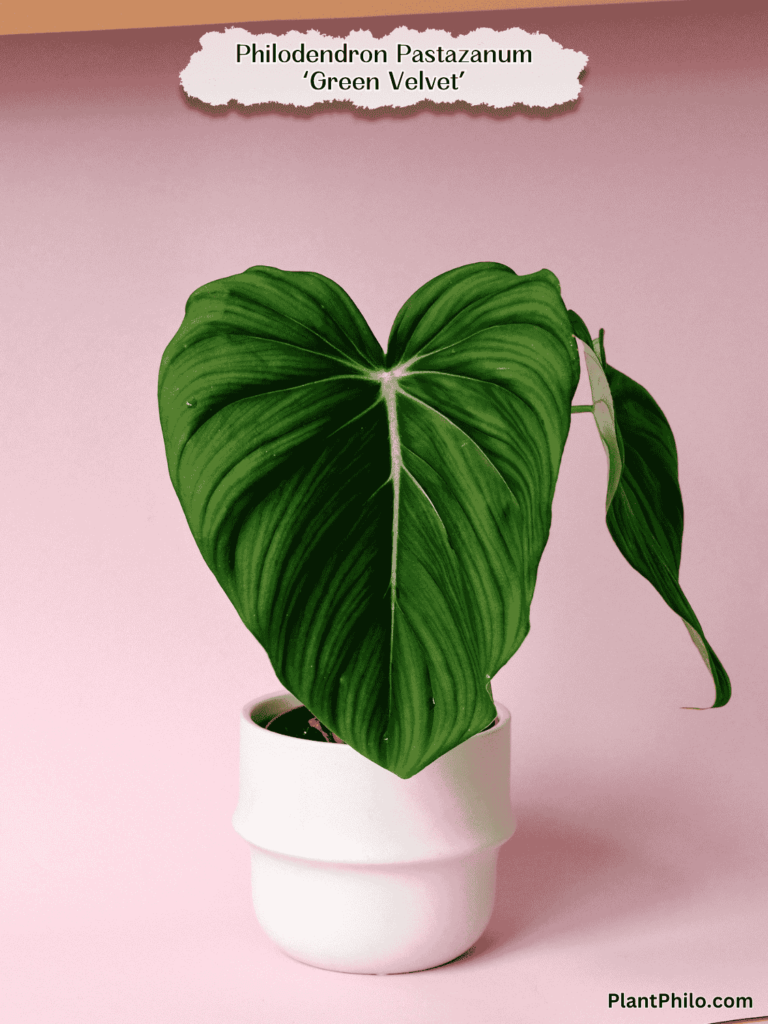
Description: Known for its rich, glossy appearance, the ‘Green Velvet’ variety has larger leaves with a velvety sheen. The deep green color and robust foliage make it a striking plant for any collection.
Growth: This cultivar is vigorous, growing faster than standard varieties. It forms a dense, bushy plant with well-defined leaves.
Care: It requires high humidity and bright, indirect light. Regular misting can help maintain its glossy foliage, and it’s advisable to avoid direct sunlight to prevent leaf burn.
2. Pastazanum ‘Compact’
Description: The ‘Compact’ variety features smaller, more compact leaves and a bushier growth habit. It is perfect for those who want a manageable size without compromising on visual impact.
Growth: This variety grows slower and stays more contained compared to other types, making it ideal for smaller indoor spaces.
Care: Needs the same care as other Pastazanum varieties but benefits from a slightly more frequent misting routine to maintain its compact form.
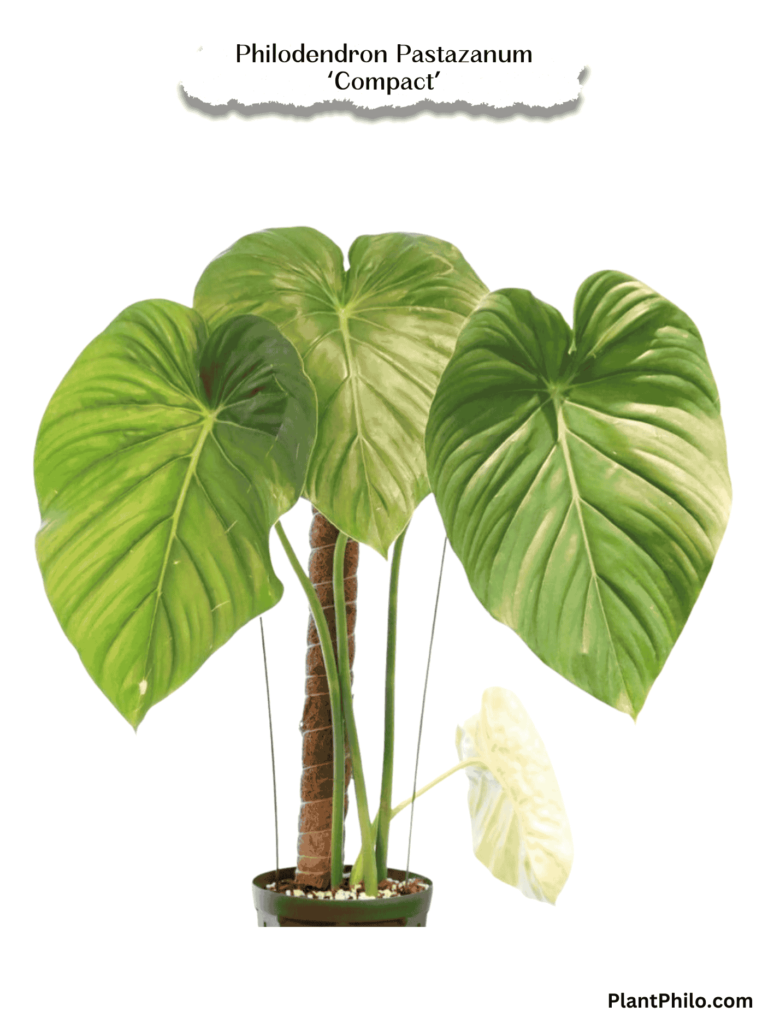
3. Pastazanum ‘Variegated’ / ‘Silver’
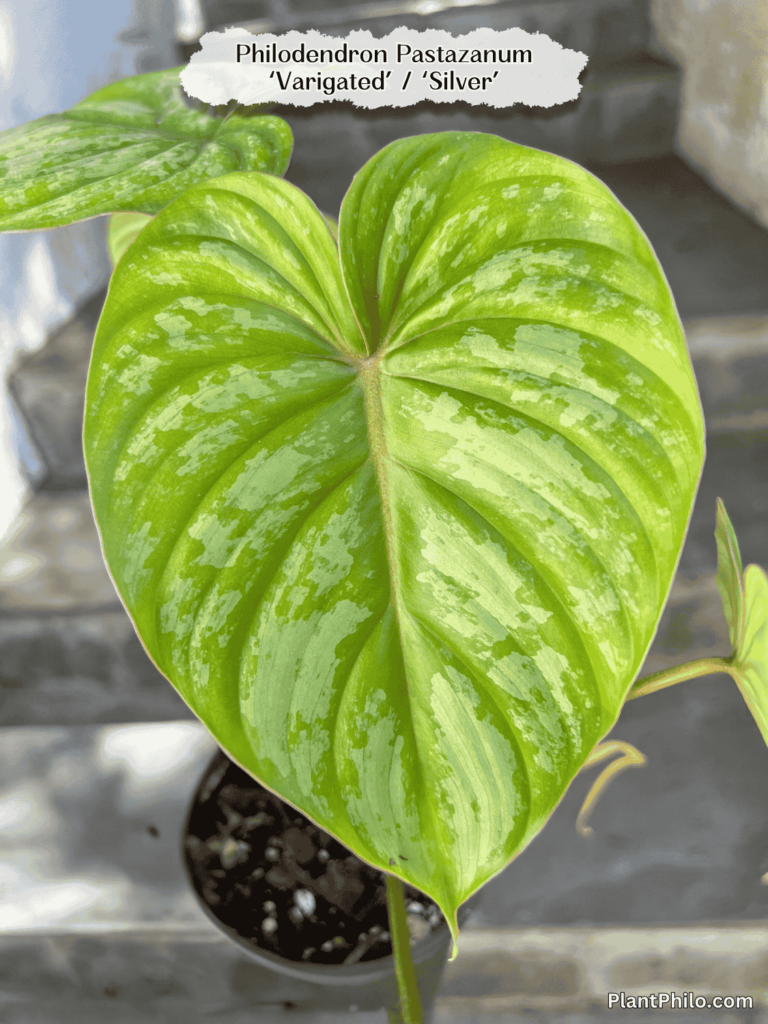
Description: The ‘Variegated’ Pastazanum displays beautiful cream or yellow variegation along the leaf margins. This striking appearance adds a touch of elegance and variety to any plant collection.
Growth: It may grow slower than non-variegated types and can be more sensitive to light conditions. Variegated plants often require more attention to light and humidity.
Care: Requires bright, indirect light to maintain its variegation. Ensure consistent humidity and avoid placing it in low light to prevent loss of color.
Philodendron Plowmanii Tissue-Cultured Varieties
1. Plowmanii ‘Dark Green’
Description: This variety is known for its dark green foliage and pronounced leaf texture. The deeper hue and textured surface make it an eye-catching addition.
Growth: ‘Dark Green’ Plowmanii is known for its robust growth and can become quite large and lush if cared for properly.
Care: Requires bright, indirect light and regular feeding to maintain its rich color. High humidity and a well-draining soil mix are essential for optimal growth.
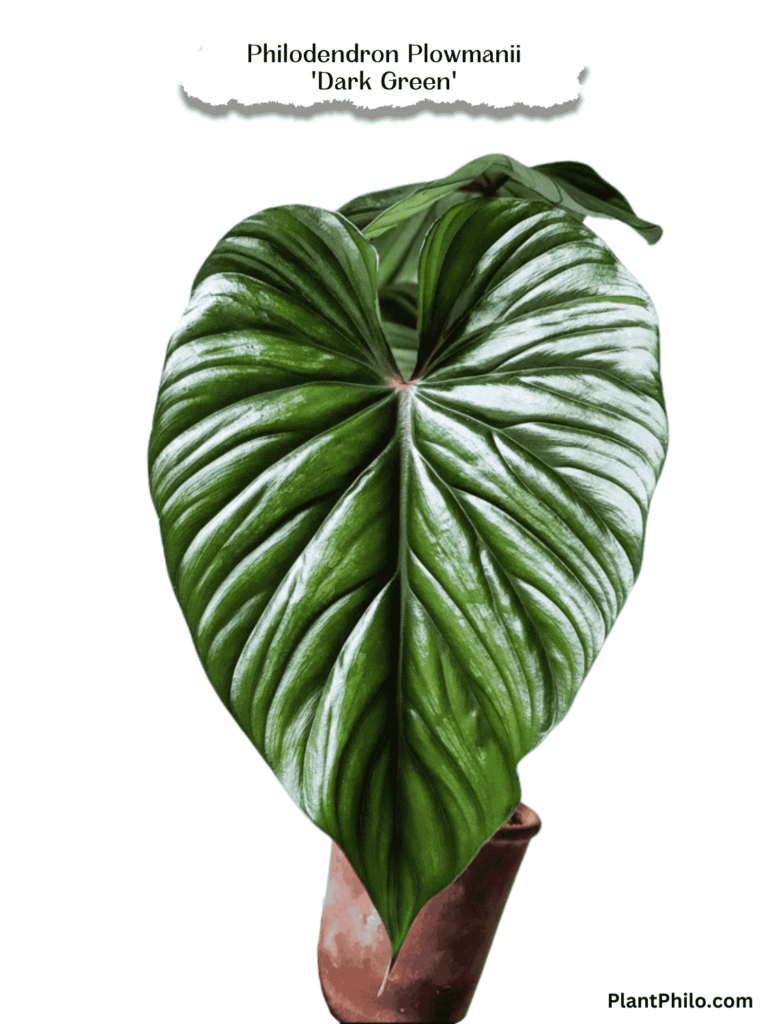
2. Plowmanii ‘Golden’
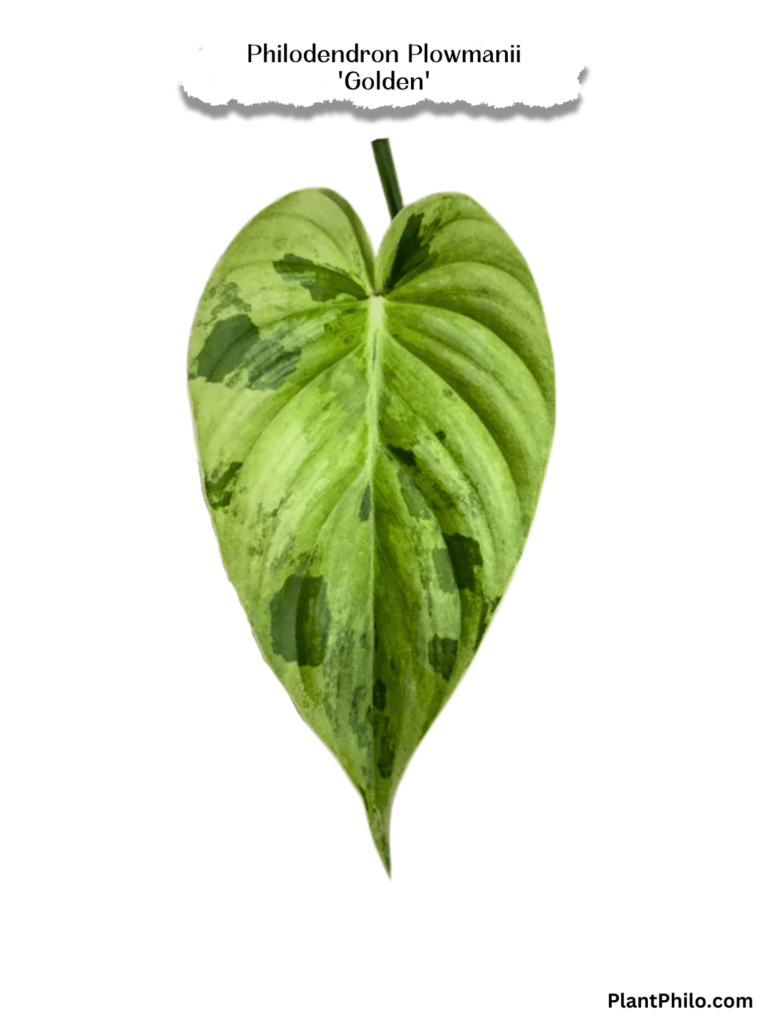
Description: The ‘Golden’ Plowmanii features vibrant golden-yellow highlights on its leaves. This variety is rare and adds a unique touch to any indoor garden.
Growth: It grows slowly and can be more delicate compared to other Plowmanii varieties. The golden hues require optimal light conditions to stay vibrant.
Care: Needs bright, indirect light to retain its golden color. Ensure high humidity and regular watering to keep the plant healthy.
3. Plowmanii ‘Mini’
Description: The ‘Mini’ Plowmanii is a smaller version of the classic Plowmanii, featuring the same characteristic leaf shape but on a more compact scale.
Growth: It is ideal for small spaces, growing slowly and maintaining a manageable size.
Care: Standard Plowmanii care applies, with a focus on maintaining consistent light and humidity levels. It’s perfect for desk or shelf placement.
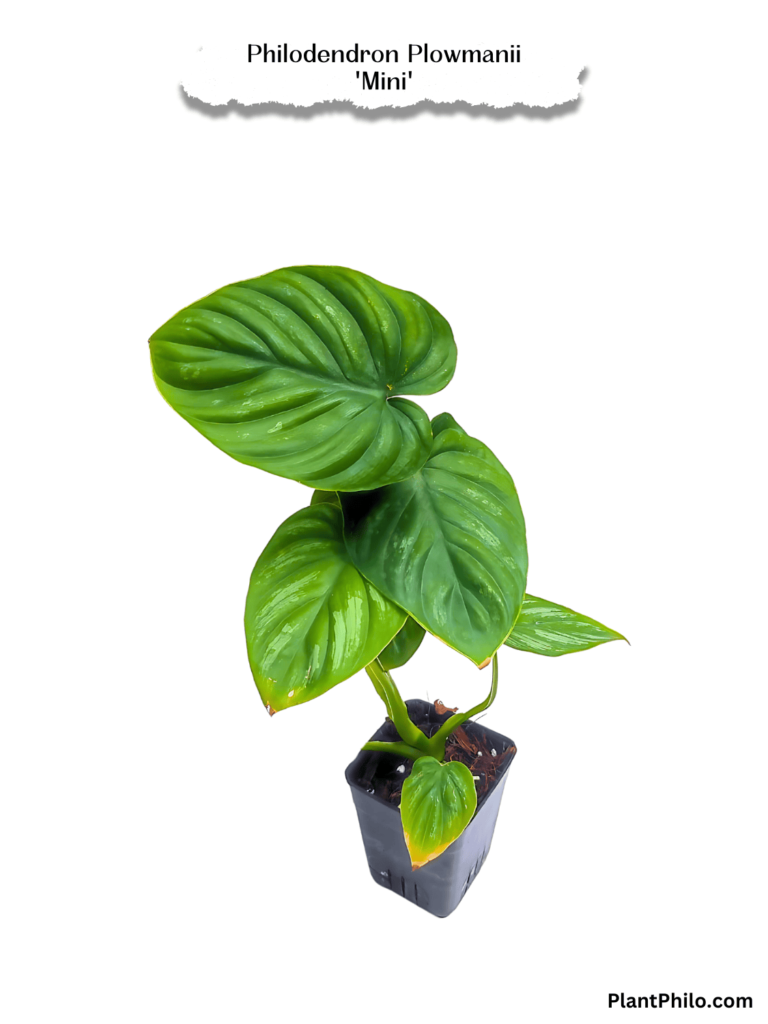
4. Plowmanii ‘Citrus’
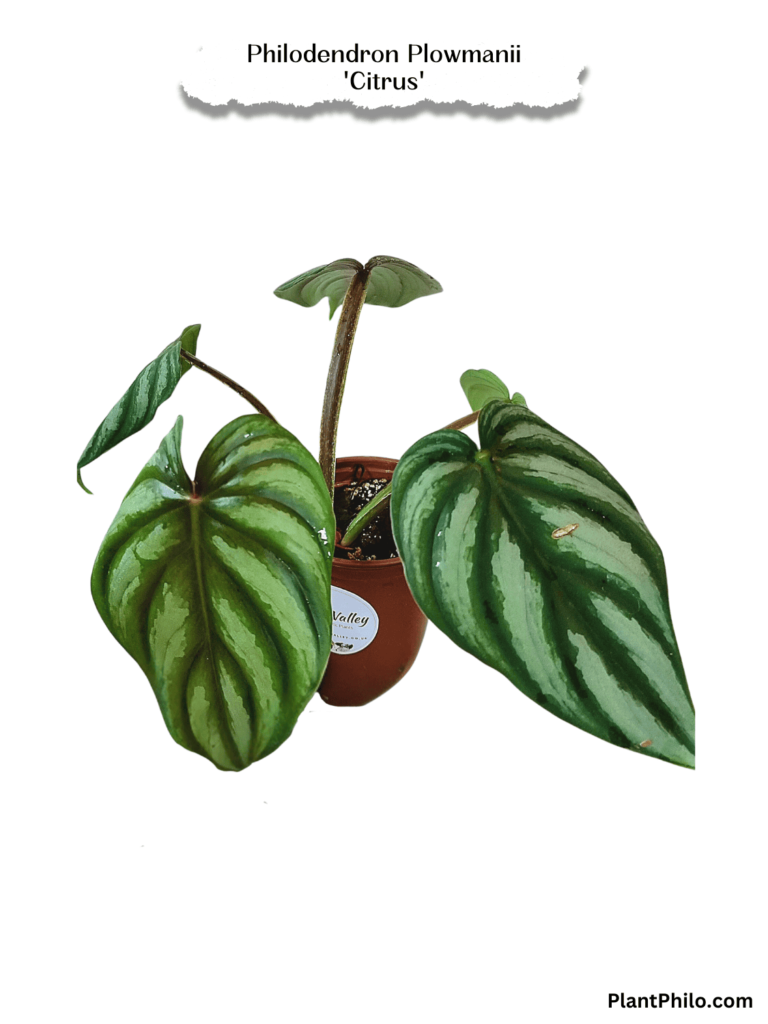
Description: The ‘Citrus’ Plowmanii boasts bright, citrusy-yellow leaves that bring a fresh, lively look to any plant collection. This variety is known for its vibrant coloration and unique appearance.
Growth: The ‘Citrus’ variety has a moderate growth rate and retains its vivid color well. It tends to be slightly more compact than some other Plowmanii varieties, making it suitable for various indoor settings.
Care: Requires bright, indirect light to maintain its citrus hue. Consistent humidity and regular watering are crucial for keeping the vibrant colors intact. Periodic feeding with a balanced fertilizer will support healthy growth.
Common Pests and Diseases Between Philodendron Pastazanum and Plowmanii
Both Philodendron Pastazanum and Philodendron Plowmanii can be susceptible to various pests and diseases. Proper identification and management are key to keeping your plants healthy.
Philodendron Pastazanum’s Pests and Diseases
- Spider Mites:
- Symptoms: Spider mites are tiny and difficult to see with the naked eye. They cause a stippled appearance on leaves and can produce fine webbing on the undersides.
- Management: Increase humidity around the plant by using a humidifier or placing a tray of water nearby. For severe infestations, apply a miticide or insecticidal soap.
- Scale Insects:
- Symptoms: Scale insects appear as hard, rounded bumps on leaves and stems. They excrete a sticky substance called honeydew, which can lead to sooty mold.
- Management: Manually remove scales using a cotton swab dipped in rubbing alcohol. For larger infestations, use insecticidal soap or neem oil to treat the plant.
- Leaf Spot Disease:
- Symptoms: Leaf spot disease manifests as brown or black spots on the leaves, often surrounded by a yellow halo. This can be caused by fungal or bacterial infections.
- Management: Improve air circulation around the plant and avoid overhead watering. Remove affected leaves and apply a fungicide if necessary to prevent further spread.
Philodendron Plowmanii’s Pests and Diseases
- Mealybugs:
- Symptoms: Mealybugs appear as cotton-like masses on leaves and stems. They produce a sticky residue that can attract other pests.
- Management: Remove mealybugs manually with a cotton swab dipped in alcohol. For persistent infestations, use insecticidal soap or neem oil.
- Leaf Spot Disease:
- Symptoms: Similar to Pastazanum, Plowmanii can suffer from leaf spot disease, characterized by dark, water-soaked spots on the leaves.
- Management: Ensure proper drainage and avoid letting the plant sit in water. Remove affected leaves and apply a fungicide if needed.
- Root Rot:
- Symptoms: Root rot is indicated by wilting, yellowing leaves and a mushy root system. It often results from overwatering and poor drainage.
- Management: Allow the soil to dry out between waterings and ensure the pot has good drainage. Repot the plant in fresh, well-draining soil to prevent further rot.
Toxicity and Safety for Pets
Both Philodendron Pastazanum and Philodendron Plowmanii contain compounds that can be harmful to pets. Understanding these risks helps you keep your pets safe while enjoying your plants.
Philodendron Pastazanum’s Toxicity
- Toxicity: Contains calcium oxalate crystals, which can irritate the mouth and digestive tract if ingested. Pets may experience oral irritation, vomiting, and difficulty swallowing.
- Symptoms: Pets may show signs of drooling, vomiting, and discomfort. Severe cases may require veterinary attention.
- Prevention: Keep the plant out of reach of pets, and consider using deterrents or barriers to prevent access. Monitor pets closely for any signs of chewing or ingestion.
Philodendron Plowmanii’s Toxicity
- Toxicity: Similar to Pastazanum, the Plowmanii contains calcium oxalate crystals that can cause oral irritation and digestive issues in pets.
- Symptoms: Pets may experience drooling, vomiting, and swelling of the mouth and throat.
- Prevention: Position the plant in a location that is inaccessible to pets. Use deterrents if necessary, and be vigilant for any signs of ingestion.
Seasonal Care and Dormancy Between Philodendron Pastazanum and Plowmanii
Proper care varies with the seasons, and understanding these differences helps you provide the best environment for your Philodendron Pastazanum and Philodendron Plowmanii.
Philodendron Pastazanum’s Seasonal Care & Dormancy
- Winter Care:
- Temperature: Maintain temperatures between 65°F and 85°F (18°C to 29°C). Avoid placing the plant near cold drafts or sudden temperature fluctuations.
- Watering: Reduce watering frequency during the winter months as the plant’s growth slows. Ensure the top inch of soil dries out before watering again.
- Light: Provide bright, indirect light. Supplement with grow lights if natural light is insufficient to prevent the plant from becoming leggy.
- Summer Growth:
- Temperature: Enjoys warm temperatures, so ensure it remains within its ideal range. Higher humidity levels can benefit its growth.
- Watering: Increase watering frequency as the plant’s growth accelerates. Maintain consistent soil moisture without waterlogging.
- Fertilizing: Apply a balanced, water-soluble fertilizer every 4-6 weeks to support active growth. Avoid over-fertilizing, as this can lead to nutrient imbalances.
Philodendron Plowmanii’s Seasonal Care & Dormancy
- Winter Care:
- Temperature: Similar to Pastazanum, it thrives within 65°F to 85°F (18°C to 29°C). Protect from cold drafts and keep temperatures steady.
- Watering: Water less frequently during winter, allowing the top soil layer to dry out before rewatering. Be cautious of overwatering.
- Light: Ensure it receives adequate indirect light. If necessary, use grow lights to supplement daylight and maintain healthy foliage.
- Summer Growth:
- Temperature: Prefers warm temperatures, which encourages vigorous growth. Maintain warmth and high humidity to foster optimal development.
- Watering: Increase watering as needed during the growing season. Ensure consistent moisture while avoiding waterlogging.
- Fertilizing: Feed with a balanced fertilizer every 4-6 weeks to support active growth. Monitor for signs of over-fertilization, such as leaf burn.
Troubleshooting Common Growth Issues
Both Philodendron Pastazanum and Philodendron Plowmanii may encounter specific growth issues. Identifying and addressing these issues promptly helps maintain plant health.
Philodendron Pastazanum’s Growth Issues
- Slow Growth:
- Possible Causes: Lack of light, inadequate nutrients, or incorrect watering practices.
- Solutions: Ensure the plant receives bright, indirect light. Regularly feed with a balanced fertilizer and adjust watering practices to maintain consistent soil moisture.
- Leaf Drop:
- Possible Causes: Environmental stress, such as temperature fluctuations or low humidity.
- Solutions: Stabilize environmental conditions by maintaining consistent temperatures and humidity levels. Avoid placing the plant in drafty areas.
Philodendron Plowmanii’s Growth Issues
- Leggy Growth:
- Possible Causes: Insufficient light or inadequate pruning.
- Solutions: Increase light exposure and regularly prune to encourage bushier growth. Ensure the plant is not stretching towards a light source.
- Yellowing Leaves:
- Possible Causes: Overwatering, nutrient deficiencies, or pest infestations.
- Solutions: Adjust watering practices, check for signs of pests, and provide necessary nutrients. Remove affected leaves to promote overall plant health.
Conclusion
By expanding on the tissue-cultured varieties, pest management strategies, toxicity concerns, and seasonal care tips for Philodendron Pastazanum and Philodendron Plowmanii, this guide provides a comprehensive overview to help you become an expert in nurturing these stunning philodendrons. With attention to detail and proper care, both varieties can thrive and enhance your indoor garden with their beauty and elegance.
What’s the main difference between Pastazanum and Plowmanii?
The main difference lies in their leaf size and shape. Pastazanum leaves can grow larger and more elongated, while Plowmanii leaves tend to be smaller and more rounded.
Which plant is easier to care for?
Both are considered moderately easy to care for, but Plowmanii might have a slight edge due to its slightly smaller size and potentially less demanding growth habit.
Can I grow these plants in low light?
They can tolerate low light, but their growth will slow down, and their colors might fade.
How often should I fertilize?
Fertilize monthly during the growing season (spring and summer) with a balanced liquid fertilizer diluted to half-strength.
What’s the best way to increase humidity?
Misting, pebble trays, and humidifiers are all effective ways to increase humidity.
Can I propagate these plants from leaf cuttings?
No, these Philodendrons cannot be propagated from leaf cuttings alone. You’ll need a stem cutting with at least one node.
How do I know if my plant needs repotting?
If the roots are growing out of the drainage holes or the plant is top-heavy and falls over easily, it’s time to repot.
Can I grow these plants outdoors?
Yes, in warm climates with indirect light, but protect them from direct sun and extreme temperatures.
Are these plants safe for pets?
No, both plants are toxic to pets and humans if ingested.
Which plant is more expensive?
The Philodendron Pastazanum is generally considered rarer and can be more expensive than the Plowmanii.

